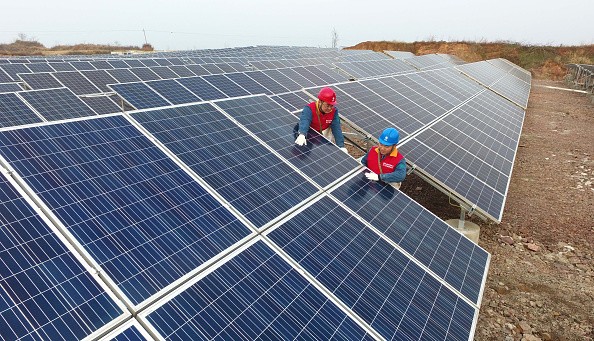Last month, China's National Energy Administration announced that it will spend at least $360 billion on green energy until 2020, a move welcomed and praised by environmentalists.
While Chinese President Xi Jinping vowed to continue to fight for climate change, U.S. President Trump is thinking of ending climate policies which he believed were costly for the U.S. government.
Although it may look like a huge investment at around $72 billion a year, the amount is small and not as impressive, considering China's high growth rate, according to Bjorn Lomborg, director of the Copenhagen Consensus Center, in an article in The Wall Street Journal.
Lomborg said it is ironic for China to assert its green efforts when renewable energy is only a small part of its economy and the country continues to rely on coal for energy.
In 2015, the country spent more than 40 percent of its budget for renewable energy to wind power. The country also leads the world in production of wind turbines, and became its fastest and biggest adopter.
Lomborg, however, said that it invested too heavily on wind power which resulted in an oversupply of wind turbines. Now many of them cannot be used as grid development is way behind the number of wind farms built. And although China has surpassed the U.S. by 75 percent in terms of number of wind turbines, according to a 2016 study by Carnegie Mellon University, the country still generates less electricity with its turbines, compared to the U.S.
A study made by the National Renewable Energy Laboratory in 2014 said that the U.S. turns off its wind energy around 4 percent, compared to one province in China which curtails about 39 percent, or about three days a week.
As China builds infrastructure to keep pace with new energy production, the National Energy Administration ordered local authorities in Inner Mongolia, Jilin, Gansu, Ningxia, Heilongjiang and Xinjiang to stop approving wind-power projects.
In addition, wind power is 80 percent to 250 percent more expensive than coal power, a document by International Energy Agency said. The cost of electricity from wind can also be 50 percent to 200 percent more expensive, according to the Carnegie Mellon study.
China's Renewable Energy Sources
According to Lomborg, China's big investment on renewable energy has taken away the focus from actions that are inimical to its green image. For instance, the International Energy Agency said that China installed several coal plants in 2015 and in the first half of 2016. In 2014, the agency said that 66 percent of its energy came from coal, not from wind and solar energy, and only 0.4 percent came from wind energy.
Lomborg further said that China's largest source of renewable energy came not from wind or solar energy, but from the traditional biomass, which people used in the form of firewood, charcoal and dung. It is also the source of air pollution in the world. Next to biomass, hydroelectric power is the second biggest source of renewable energy in the country.
However, if China does what it had promised in the Paris Agreement, the renewable share will increase by 4 percent in 2040 and will take hard work to keep up with its bold pronouncements, Lomborg said.



























